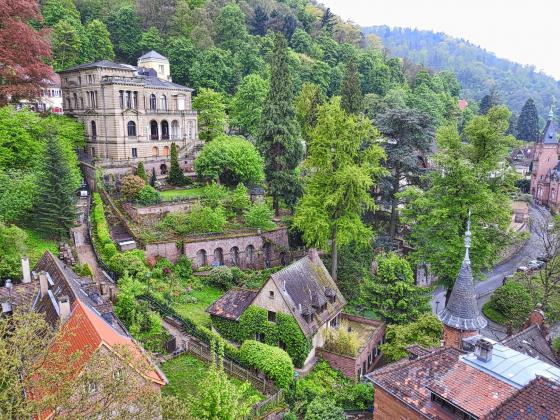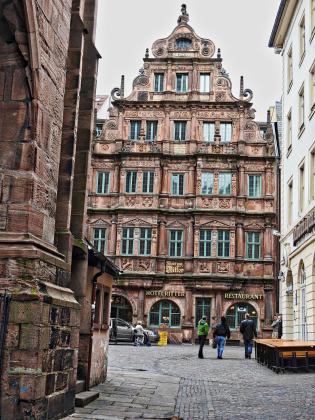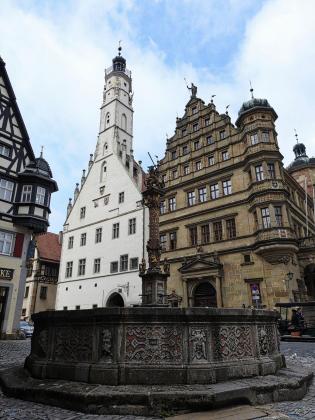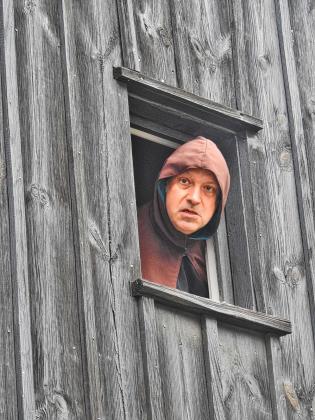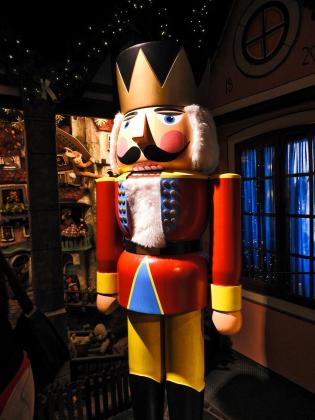BONJOUR WORLD: Martin Luther’s Reformation Focus of Germany Travel Mart 2017
The German Travel Mart is like everything else German-made, a matter of perfection.
Particularly if you want to get a better idea of what Germany has to offer as a travel destination.
This year the event took place in the Bavarian city of Nuremberg where those in attendance learned that by 2030 Germany’s inbound tourism industry could potentially reach 121.5 million overnight stays. That is easy to believe when you think about all the charming villages, large cities and cultural highlights that really can only be found in this country.
While I have been to Nuremberg a number of times, each visit is unique given that this impressive Franconian city offers 950 years of history dating back to the middle ages.
Take special care in Nuremberg to visit the Kaiserburg Museum, also known as the Imperial Castle where you will enjoy views of the architectural history of this old fortress and get a glimpse of weaponry from the Middle Ages as well as other day-to-day activities during the time when the castle was in use. In fact, this castle is an emblem of the city of Nuremberg and from the top you can see Old Town looming below with many tempting options.
From this stopping off point I headed on a tour of what is this year’s big deal in Germany Martin Luther. In fact, 2017 celebrates roughly 500 years since the Reformation. A good place to begin to take a look at this time period and what it meant for the country overall is in Augsburg. This was an important city for the reformation and it was in 1518 that he refused to withdraw his thesis during a hearing by the Cardinal there. This was just the first step in his quest for his determined changes and by 1530 through a series of events Luther set in motion, religious freedom was obtained.
From Augsburg head to Rothenburg in the Tauber Valley where the reformation continued with much unrest. It was in this town that the reformation of Luther was not fully accepted until around 1544 in part due to the earlier Peasants’ War. For those interested in learning the procession of how the reformation took place here a look in at the Imperial City Museum and the Medieval Crime and Justice Museum will show you that this time period and the changes going on were big business.
At the Medieval Crime and Justice Museum an exhibition called Luther and Witchcraft will draw you into the dogma that was rampant at that time with Luther’s witch hunting mentality. The exhibition is well done and draws on the topic of how the reformation and the history of witchcraft intercepted in Germany from the beginning of the witch hunts to the end. There are a number of exhibits outlining and documenting the insanity.
You will also want to take the time to walk the streets of Rothenburg and learn what an important part this city played in the trade and pilgrimage routes. Even from the beginning it was noted that Rothenburg was one of the more openminded cities in regard to the reformation.
On a lighter note, when people think of Germany often Christmas and the many Christmas markets in the country come to mind. In Rothenburg you can take a tour of the year-round Christmas extravaganza at Kathe Wohlfahrt, which is a German Christmas Museum with a Christmas-village. It was Harold Wohlfahrt who laid the foundation for this museum when he purchased a historical father Christmas that he found in an antique shop in 1991. His German museum officially opened in 2000 and you will be able to find many elaborate Christmas tree stands on display as well as advent calendars and 150 Santa Clauses. In all there are over 30,000 different Christmas decorations to choose from here, so you can take something home too.
After Rothenburg an obvious next stop will be Heidelberg. This ancient capital of the Palatinate and home to Germany’s oldest university was one of the main strongholds from the time of the reformation beginning in 1560. It was here that the Heidelberg Catechism was created in 1563.
The Heidelberg Castle is a must on every visitor’s list and it overlooks the popular Neckar River. While the castle sits mainly in ruins right now, you can see the past easily enough in the remains dating from the Medieval, Renaissance and Baroque German times. Other stops worth noting in Heidelberg include the Old Bridge, the Church of Holy Spirit and the University’s Student Prison and Lecture Hall.
In the city of Coburg located in the north of Bavaria and on what is called the “Road of Castles” this town is well-known because it is said nearly every European monarchy is related to the Coburgs. That certainly puts it on the map, but you will also find many art collections and monuments and plenty of castles and palaces here too. There are four Ducal Castles in Coburg; Callenberg, Ehrenberg, Veste Coburg and Rosenbau, which by the way, was the birthplace of Queen Victoria’s husband Prince Albert.
In regard to the reformation Luther visited Coburg with a group of nobles and knights at a time when he was under imperial ban. He stayed at the fortress Coburg for almost a year waiting for the outcome of the reformation’s uproar with word coming from Augsburg. The Veste Coburg fortress and St Moriz Church are two of the most notable Luther memorial locations in Germany.
Even as you are touring the history of Germany’s reformation however, keep in mind the food, the history dating even further back than the 1500s and the people all play a part in making this country what the German Travel Mart folks assured is a main draw for tourists from around the world.
For more information about Germany visit www.germany.travel.
Sidebar – The foodie side of Nuremberg
While it is obvious to think of history when visiting Nuremberg, one might then easily overlook some of the more modern activities you can do in the city. While I was there I enjoyed a foodie tour and around every corner there was a culinary surprise from hidden alleyways to inviting courtyards around this boisterous city.
My tour was with a company called Cookionista and the culinary highlights included a city tour with diverse examples of the local flavors from bratwurst to gingerbread. We stopped in for a baking class and learned how to make the gingerbread cookie first hand before heading off for one delectable bite after another.
For more information visit www.cookionista.com

